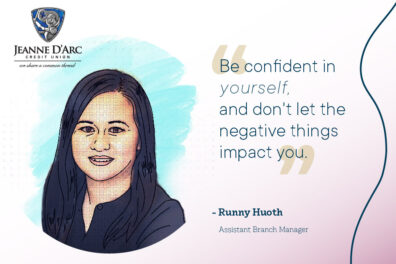Overdrawn Bank Account? Here’s How to Get Things Back on Track

It’s easy to make mistakes with finances. Even though you have a planned budget at the beginning of each month, sometimes you end up spending more than you should have. Before you know it, you’ve overdrawn your bank account and need to get your account quickly back “in the green.”
You might find yourself asking: “My bank account is overdrawn and I have no money! What now?” If you cannot cover your negative account balance, read on as we share steps you can take to improve your situation!
Stop Spending from the Negative Bank Account
Your negative bank account balance can quickly snowball into much higher debt, therefore you should discontinue any nonessential spending. Be sure to stop all automatic payments and subscriptions that are drawn from your account. When you’re overdrawn, each automatic “pull” will result in a fee, which could add up if you’re not careful.
Balance the Account
The next step you could take is to manually balance your checking account. This might help you to immediately see how much money you’ll need to bring your account back to a positive amount. Don’t forget to include any returned check or overdraft fees, as well as charges or checks that haven’t yet been debited from your account.
You can balance your account in a couple of ways. Log into your online banking account to see what you’ve spent, any checks you’ve written, the direct deposits you’ve set up, and any outstanding payments. You can also look at your checkbook or account ledger—but that’s only helpful if you have been keeping a running tab of what you’ve spent.
Balancing your account is more than just checking your balance each day. Record the transactions you make each day and then mark them off when they clear your account. If you’re not regularly balancing your account, you should start doing so now, especially if you’re having issues with an overdrawn account.
Talk to a Credit Union Representative
Here at Jeanne D’Arc Credit Union, we want to work with you to help settle an overdrawn account. Talk with one of our representatives and let them know you’d like to bring your account even. Together we can work to create a plan that gets you back on track.
Get Balance Alerts
Setting up alerts to notify you when your account goes below a certain amount is one of the easiest things you can do. It’s also a good idea to sign up for daily account balance reminders, so you always know how much money you have available. This constant reminder avoids the “out of sight, out of mind” mentality and can help keep your budgeting on track.
Overdraft Protections
With Jeanne D’arc Credit Union, we offer several Overdraft Protection Programs. These are ways to help you if you overdraw your bank account. It’s important to understand the breakdown of how these protections work for you.
If you overdraw your bank account, your best option is to use your savings account as an Overdraft Protection Source.
For example, if you write a check for up to $500 and don’t have sufficient funds in your checking account, the $500 will be deducted from your savings account. You will only pay a small service fee of $7.50 and the check is paid!
As part of your Jeanne D’Arc Credit Union Checking Account, you have the option to enroll in Extended Overdraft (EOD). There is no fee to enroll in EOD, but if you write a check for up to $500 and don’t have the funds in your account, Jeanne D’Arc will cover the check and bill you a $30 fee for each day until you have replenished the funds in your account.
Insufficient Funds (NSF) Fees, if you are not enrolled in either the Savings Account Protection or EOD and you overdraw on your account, the payment will not be covered and you will incur a fee of $30 and the check will be returned.
Staying on Track
It’s important to take responsibility for your spending and monitor your accounts to avoid negative bank account balances that lead to overdrawn fees or charges. If you need more guidance on this front, contact us and we can help you get back on track with your finances.



